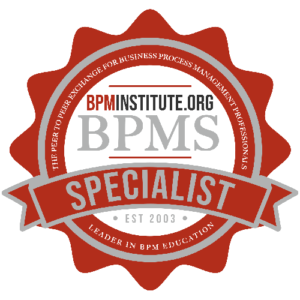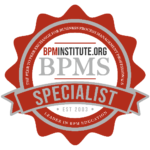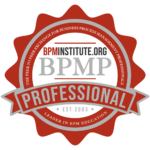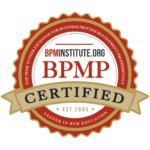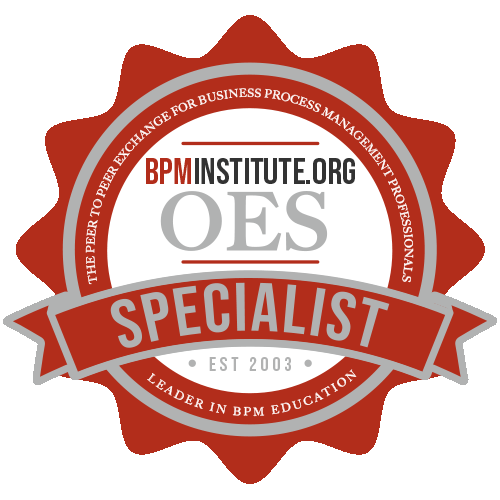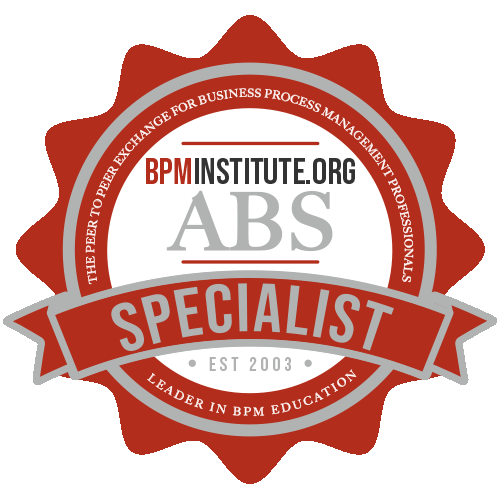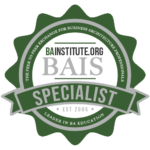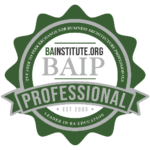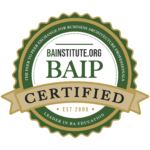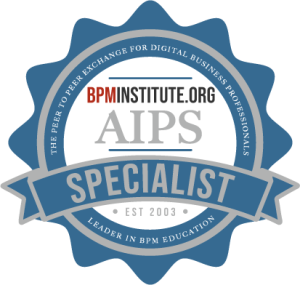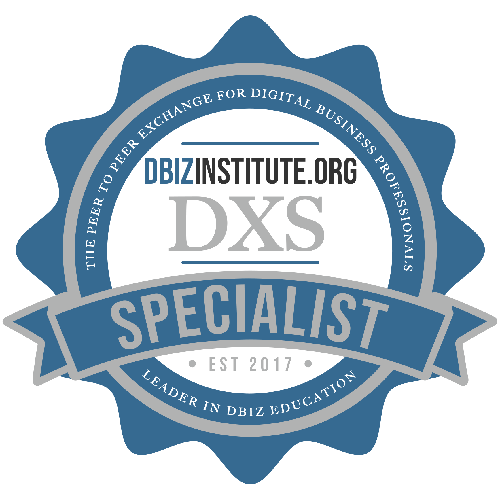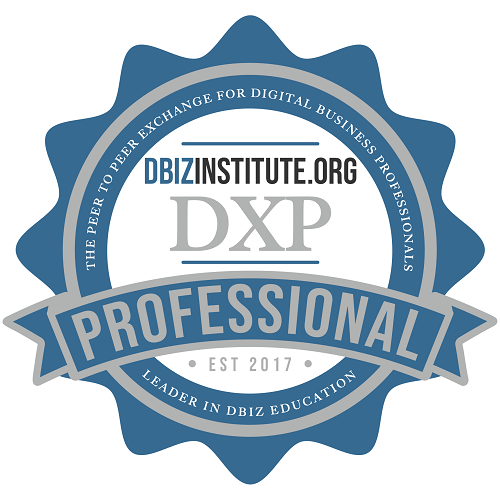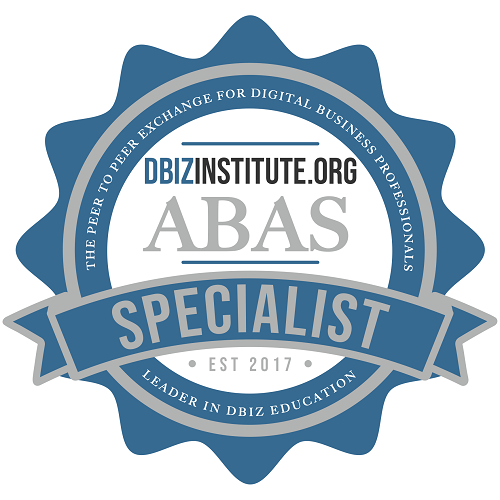Home / Resources
Resources
Discover a Wealth of BPM Knowledge and Expertise at BPMInstitute.org!

An Incremental Approach to Enterprise Decision Management
Enterprise Decision Management (EDM) offers organizations the opportunity to lift performance in many areas of operations. Wherever business processes involve complex decisions, and these decisions must be made rapidly, in high volumes and under changing conditions, EDM will improve results.

Introducing a Cornerstone of the Business Rules Approach: The Rule Maturity Model
Business rules represent an important organizational knowledge asset. But this does not imply that it is appropriate for an organization to harness and manage all of its business rules in a formal way. Rather, an organization should identify the important business...
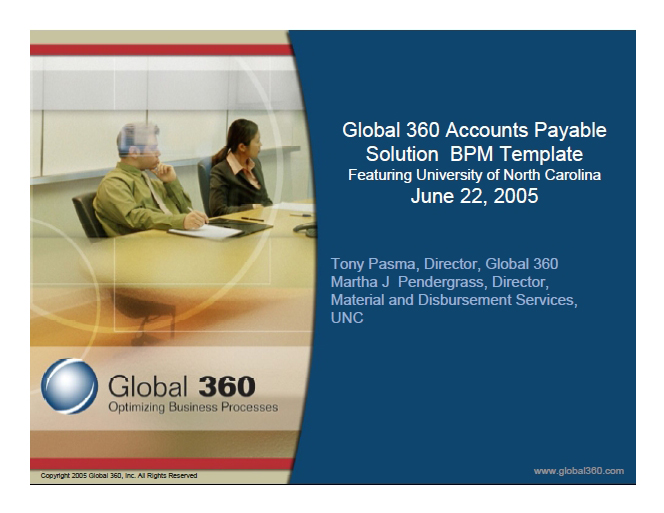
Business Process Management and Accounts Payable
Gartner’s BPM Senior Analyst Jim Sinur advises organizations to “Consider agile BPM templates if you want to cut time to market and cost, while retaining business uniqueness.” ( Business Process Management Suites Will Be the ‘Next Big Thing’, Gartner Research Note, 8 February 2005 )

BPMS Watch: Without a BPMS, It’s Not Really BPM
This is the first installment of a monthly column. My focus is software technology dedicated to automating, integrating, and managing business processes, the building blocks of so-called business process management systems (BPMS). I readily admit that within the BPM community there is a contingent that believes BPM has little to do with software, that it’s really a new way of thinking about the business.
Back To The Future – Lessons Learned From Past Futures
Leading companies are integrating and optimizing end-to-end business processes and crossing traditional IT system boundaries within organizations. In addition to requiring a good integration strategy, this trend forces companies to adopt process orientation and explore BPM as a technology to orchestrate, optimize and increase flexibility.
Brett Champlin is an internal Process Consultant who leads business and IT process redesign projects. He led the development of an enterprise process model repository and the selection of the enterprise process modeling, analysis and design tools.

Six Critical BPM Capabilities Close the Loop for Success
Many BPM solutions are beginning to sound very similar while most are missing key components, which are mandatory for a true end-to-end solution. Through goal management, process modeling and simulation, process and workflow management, content management, application integration and dashboard analytics, organizations can focus on seamlessly connecting their planning, objectives and goals directly to their rules and processes. By determining business priorities up front, organizations can ensure the many touch points, workflow and processes support key business objectives.

The Four Tenets of Service Orientation
The Four Tenets of Service Orientation
SOA has become a well-known and somewhat divisive acronym. If one asks two people to define SOA one is likely to receive two very different, possibly conflicting, answers. Some describe SOA as an IT infrastructure for business enablement while others look to SOA for increasing the efficiency of IT. In many ways SOA is a bit like John Godfrey Saxe’s poem about the blind men and the elephant – each of the men describes the elephant a bit differently because each of them are influenced by their individual experiences (e.g.
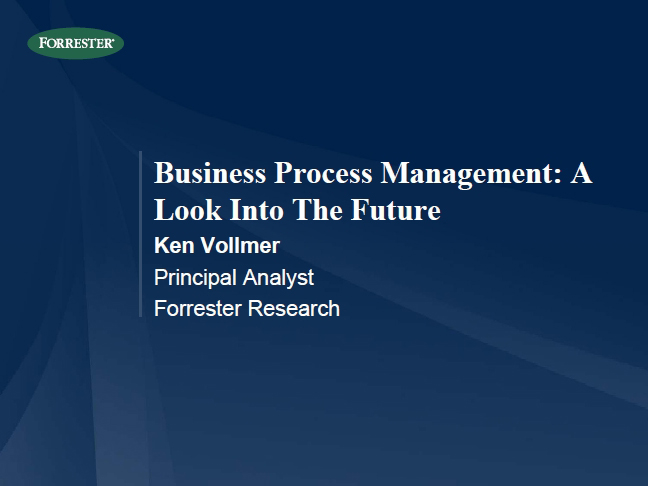
BPM and SOA
Please join us to hear a future perspective on BPM from Ken Vollmer of Forrester Research and how “You Can’t Implement BPM with BPM” from Ross Altman, CTO of SeeBeyond.
Ken Vollmer of Forrester will provide his perspective on the future of BPM. In this session, Ken will address the need to combine a structured, systematic methodology for BPM implementation with a Service Oriented Architecture.
Please join us to hear a future perspective on BPM from Ken Vollmer of Forrester Research and how “You Can’t Implement BPM with BPM” from Ross Altman, CTO of SeeBeyond.
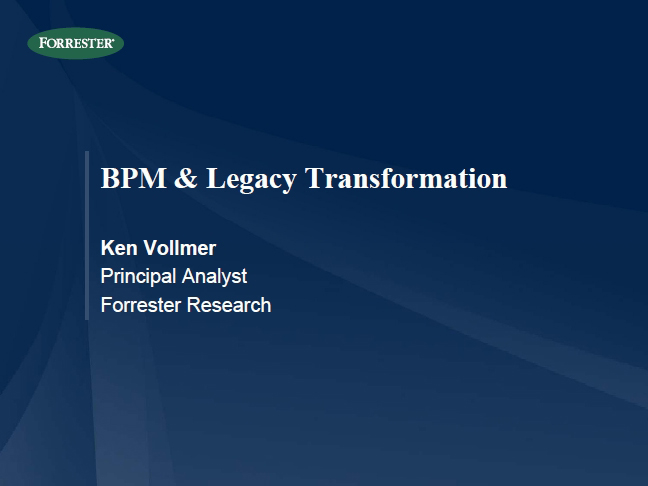
Why Rules-Driven BPM Suites Make Strategic Sense for Legacy Transformation
IT organizations are spending an alarming amount of their budgets on legacy maintenance. In some sectors as high as 80% – especially where companies have grown through acquisition and have multiple and redundant infrastructures. The cost and risk?
IT organizations are spending an alarming amount of their budgets on legacy maintenance. In some sectors as high as 80% – especially where companies have grown through acquisition and have multiple and redundant infrastructures. The cost and risk?
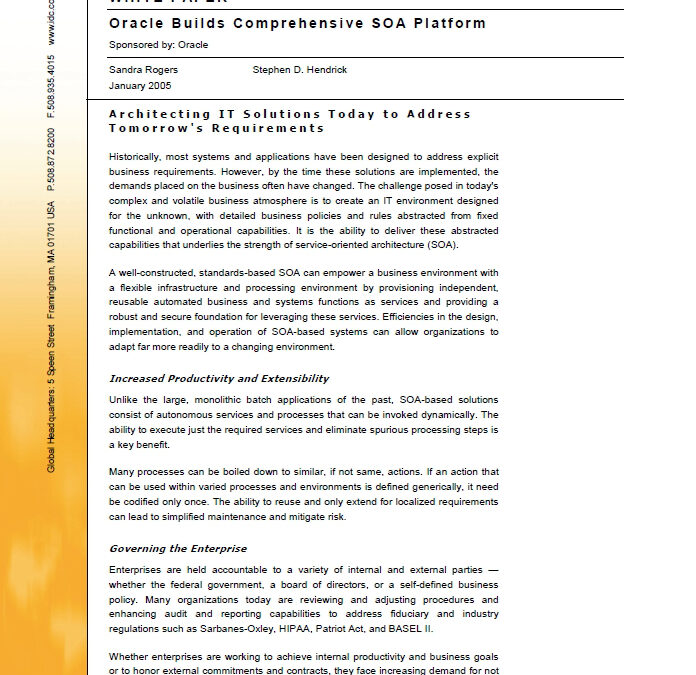
Oracle Builds Comprehensive SOA Platform
Through the recent evolution of BPM around the Business Process Execution Language (BPEL) standard, a comprehensive SOA platform has become a key requirement for implementing standards-based BPM. SOA empowers a business environment with a flexible IT infrastructure and reusable business and systems services for deploying processes. This white paper from IDC covers the requirements for building a comprehensive SOA platform including BPEL, service development, integration, management, and security.
Back to the Future
Every new wave of industrial and information technology has brought prognostications about what it would mean to the workplace. Usually, these predictions are either wildly utopian, claiming universal application, or dystopian, warning of dire consequences. Typically, neither extreme comes to pass.
Optimizing Business Processes for Performance Management
Businesses today are trying to be more effective in their operations to optimize results. Though ERP systems have automated transactions, organizations still cannot manage themselves. Measuring and monitoring from a business process context is essential to manage operational performance and the framework for developing a process-centric view for measurement of an organization is an essential step to maximizing operational performance. Business intelligence and business process management technologies are converging to support new capabilities.
Leveraging BPM in Uniting People, Process & Technology
The volatile nature of today’s business and regulatory environments is driving organizations to address process-change head on. The financial services industry is no exception. Business processes have traditionally required manual intervention, thus missing the mark in achieving true straight-through processing.
Get Ready for Extreme Competition: The Business Case for BPM
What do GE, JetBlue Airways, Progressive Insurance, Amazon and the Virgin Group have in common? By making deep structural changes–made possible by business process innovation–these companies have transformed the very ways they operate their businesses, changing the game in their industries. Indeed, there’s a new breed of fierce competitors on the block ready to engage your company in extreme competition. Are you ready?
Why is it that, given two companies with approximately the same capital assets and same number of skilled employees, one struggles and the other grows profits?
BPM at Work: Improving Property Management Processes at a Large R&D Facility
The Goddard Space Flight Center at NASA uses more than $525 million of technical and administrative accountable government property in the performance of its mission.
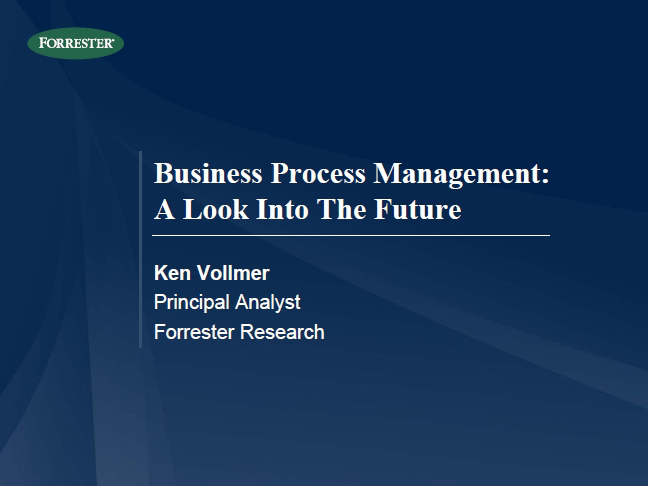
Business Process Management: Aligning IT Execution With Business Goals
Business Process Management improves business and IT alignment by converting business requirements into IT implementations. Join us in this webinar to learn about new trends in Business Process Management and how you can benefit from business process integration. You’ll also learn how to model and compose portable business processes on top of heterogeneous applications using Business Process Execution Language (BPEL) with Oracle BPEL Process Manager and Popkin software.
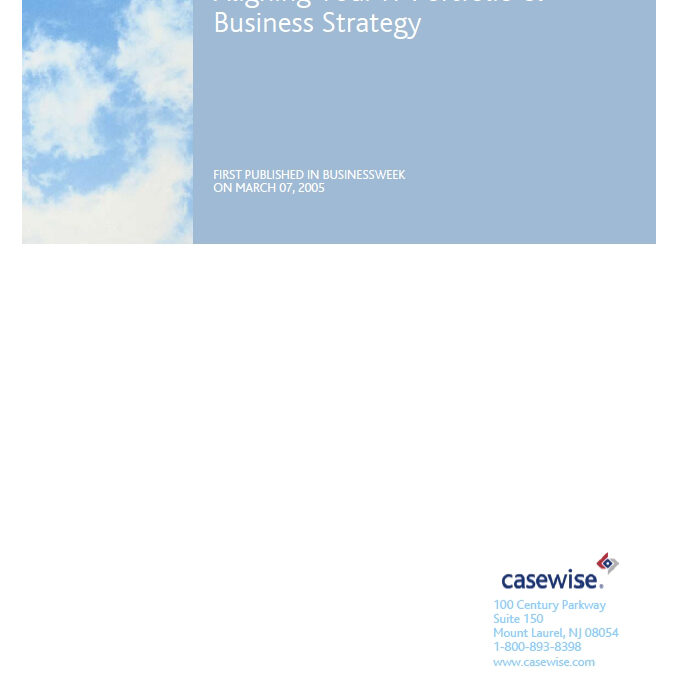
Optimize Your Vision: Aligning Your IT Portfolio and Business Strategy
Comprehensive process design is the foundation for improved efficiencies in process management practices. Aligning the IT Portfolio to the Business Strategy helps deliver value to the business and support an agile enterprise.

Defining a Baseline for Improvement
Change isn’t easy. It’s not something most of us seek out. But for any company who intends to remain healthy and competitive in an increasingly global and electronic marketplace, change is continual and necessary. Market downturn or other external factors may force us to become more efficient at what we do. Other times the need for change comes from within – a response to new product or service offerings, system enhancements or reorganizations, for example.
“As the business grows, it gets increasingly difficult to know what is going on

BPM: Taking it to the Next Level
Taking BPM applications to the next level involves more than buying a good BPM solution. The technology is important, but two things will make or break a BPM deployment. The first is creating customer value through the company’s enterprise-wide business processes and the second is understanding and managing the processes at the organizational and actual process activity level. To accomplish these the mindset of the whole organization must change.
Andrew Spanyi is the managing director of Spanyi International, a consulting and training company that operates in the field of organization and process design. He has worked with executive teams at global organizations assisting them to change the way they think about their business. He is the author of ‘Business Process Management is a Team Sport, Play It to Win!’
BPM Essentials – Best Practices, Navigating the Pitfalls, Key Emerging Trends and the 6 Critical BPM Fundamentals
Don’t miss this candid discussion with Jon Pyke, BPM veteran, Chair of the Workflow Management Coalition (www.wfmc.org), the former Chief Technology Officer for Staffware prior to its acquisition by Tibco and currently the Sr. VP of Technology Strategy at Global 360.
